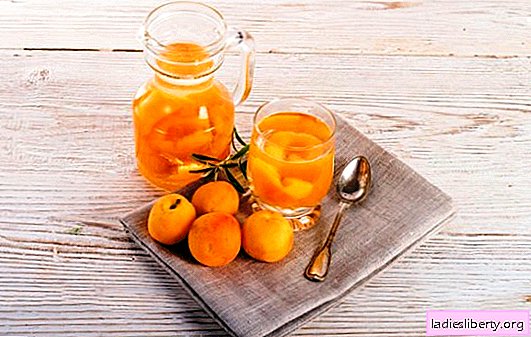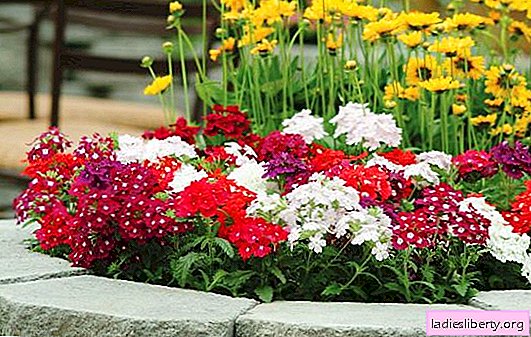
In spring, crocuses bloom in the front garden - bright primroses.
It is not difficult to grow them, if you know the subtleties of the autumn crocus planting.
Choose planting material
When growing crocuses, it is very important to choose the right planting material, the further development and flowering of the plant depends on its quality. When choosing bulbs, you need to consider that there are autumn-flowering varieties, the planting of which differs in timing. Spring primroses are planted in the fall.
1. When choosing the bulbs, carefully inspect them. Healthy planting material does not show signs of damage, overgrown roots or damage.
2. A good bulb should be firm to the touch, without soft spots.
3. Also pay attention to the flakes. Bulbs of good quality are dry.
4. Do not buy seed if there are signs of decay of the onion.

Preparation of crocus bulbs for autumn planting + photo
Before placing the bulbs in the holes, they must be processed and disinfected. This will protect the landing from damage. To prevent diseases and rot, the bulbs are pickled in a potassium permanganate solution. To this end, fungicides are still used. Good results are obtained by treatment with Fundazole, the drug "Skor", "Vitaros". A working solution is prepared based on 1 liter of water about 2 ml of the drug. The resulting solution is enough to process up to 1 kg of crocus bulbs.

Planting material is lowered into the prepared disinfection solution and left for half an hour. After that, they begin to plant the bulbs. It is impossible to wash the processed bulbs.
Important! You can process the seed in a weak solution of potassium permanganate. Bulbs stand for about 30 minutes.
Choosing a place for a flower bed
Autumn crocus planting begins with a choice of place. It should be borne in mind that crocuses prefer sunny places, without stagnation of moisture, the excess of which leads to various diseases. For full flowering, they need light. In the shade of trees, buds may not bloom.
The soil on the site should be loose and nutritious. Heavy soils are not suitable for growing spring primroses. River sand will help improve soil conditions. It is brought under digging, which makes the earth more loose. If the soil is not too nutritious, then it is advisable to add potassium, phosphorus and mature compost preparations. Fertilizers with a nitrogen content are not used when growing crocuses.
When choosing a place for the autumn crocus planting, give preference to the quiet corners of the garden, where there are no drafts and cold winds. Strong gusts of wind can break fragile plants.
Getting to planting the bulbs
How to plant bulbs? Experienced gardeners are advised to plant bulbous plants in special baskets. They will protect crocuses from rodents and facilitate the digging of plants.

Crocuses without baskets are grown, bulbs are placed on the bed, leaving a distance of about 5-7 cm between them. A flowering carpet of bulbous plants looks very good. For this, the bulbs are planted tightly, at a distance of 3-5 cm.

Depth for autumn crocus planting depends on the size of the bulb. Larger ones are planted to a depth of 10-15 cm, and shallow ones are planted 5-8 cm. How to determine the embedment depth of planting material? Depth is considered optimal, which is equal to the height of the bulb times 3.

Crocuses are cold-resistant plants, but in regions with a harsh climate, it is better to mulch the bed with spruce branches or dry foliage. In spring, all the mulching material is removed, the landing site is gently loosened, being careful not to damage the root system of plants.
Crocus care after flowering
Crocuses need an annual dig. After flowering, which ends in July, it is necessary to cut off the entire aerial part of the plant. Soon they begin to dig the bulbs. They are carefully removed from the ground with a pitchfork, trying not to damage. Next, the bulbs are washed, sorted and sorted. After drying and airing, which lasts about 7 days, planting material is laid in storage.
Keep crocus bulbs with a gradual decrease in temperature. At the first stage, the bulbs are lowered into the basement, where they are laid out in one layer. After a few weeks, planting material is placed in the lower section of the refrigerator, where it is stored until planting. The optimal time for planting bulbs is considered mid-September - early October.
How to distill crocuses
Experienced gardeners grow crocuses in pots. At the same time, a flowering plant can be obtained by a certain date. But for this, the crocuses must be distilled according to all the rules.
1. From the time of planting to flowering takes from 3 to 3.5 months or 15 weeks. This must be taken into account when distilling crocuses for the holidays. To obtain a flowering specimen for the New Year, crocus is planted in the fall, namely, in mid-September.
2. All bulbs must undergo natural training under certain temperature conditions. For this, the bulbs are acquired in the summer and stored at a temperature of 30 degrees for about 7 days. Further, planting material is lowered into the cellar, where it is stored until mid-August. Further storage of bulbs occurs in the refrigerator, at a temperature of 5-7 degrees.
3. Planting crocuses is carried out in a prepared container.
4. Bulbs are placed very closely to each other, not like on a bed. The fact is that the plant does not grow under such conditions and does not give children.
5. As a substrate for the forcing of crocuses, river sand is used. At the bottom of each tank, good drainage is arranged.

Distillation of crocuses is a very simple task, knowing all the rules, even a beginner gardener will cope with it.
Difficulties in growing crocuses
Often, beginners complain that growing crocuses does not bring results, and the plants do not bloom. Why it happens?
• Lack of flowering indicates improper care.
• Bulbs were dug ahead of time, disrupting the natural cycle of development.
• The aerial part was cut off too early; the leaves are removed after they have completely dried.
• The temperature storage conditions of the bulbs are violated. First, planting material is stored at high temperature, gradually reducing it. The last stage of storage takes place at very low temperatures.
• Lack of flowering indicates that the garden has reborn. Crocuses need planting rejuvenation once every three years. If all this time they were grown without digging, then it's time to plant crocuses.
• On buds damaged by rodents, the buds are not tied. Crocuses will be secured by planting in special baskets for bulb plants.
Some varieties of crocuses bloom in the fall, so when buying bulbs, be sure to ask what kind of variety they are.
Despite the small size of crocuses, flower growers are very fond of them. After all, they are completely undemanding and easy to care for. In addition, crocuses are planted in the fall, which allows you to admire the flowering flower bed in spring. Having become acquainted with all the intricacies of growing bulbs, it will pass without much effort.











